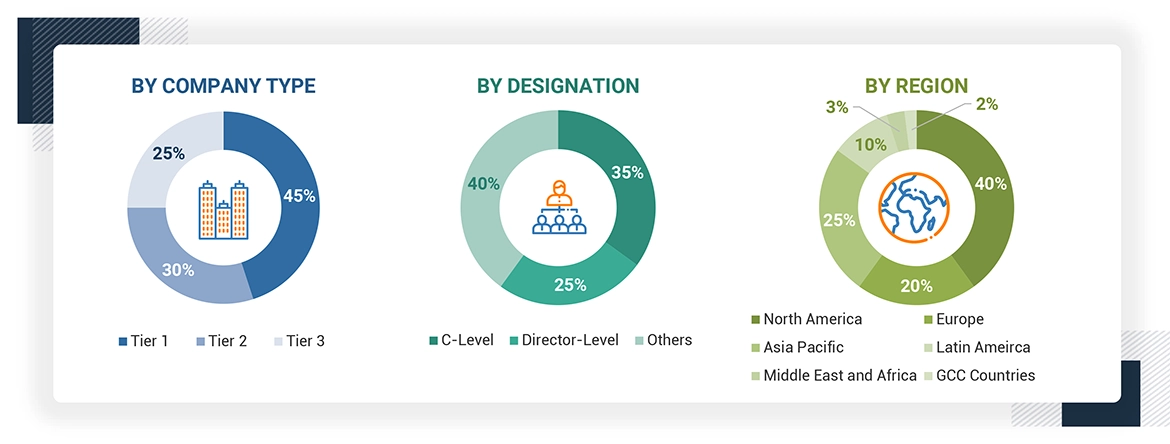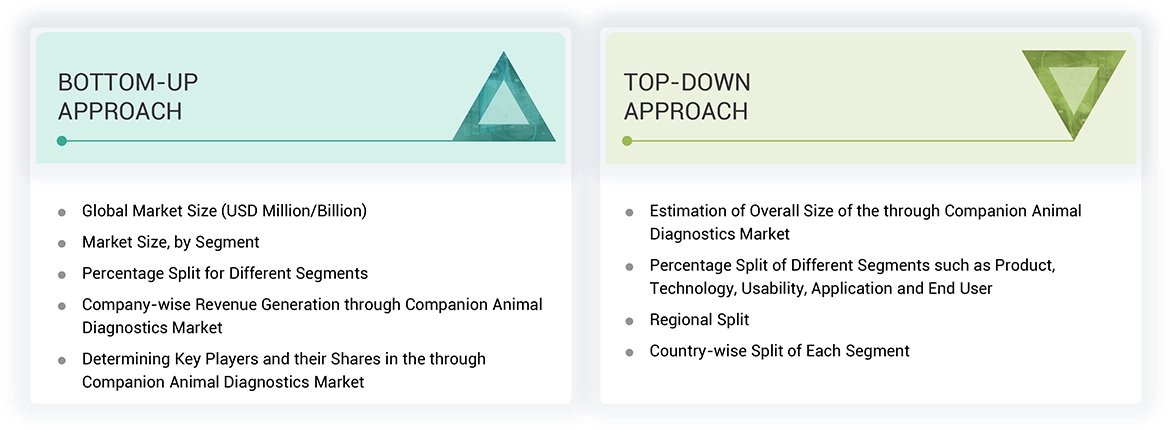This research study involved the extensive use of both primary and secondary sources. It involved the study of various factors affecting the industry to identify the segmentation types, industry trends, key players, the competitive landscape of market players, and key market dynamics such as drivers, opportunities, challenges, restraints, and key player strategies.
Secondary Research
This research study involved the wide use of secondary sources, directories, databases such as Dun & Bradstreet, Bloomberg Businessweek, and Factiva, white papers, and companies’ house documents. Secondary research was undertaken to identify and collect information for this extensive, technical, market-oriented, and commercial study of the companion animal diagnostics market. It was also used to obtain important information about the top players, market classification, and segmentation according to industry trends to the bottom-most level, geographic markets, and key developments related to the market. A database of the key industry leaders was also prepared using secondary research.
Primary Research
In the primary research process, various supply side and demand side sources were interviewed to obtain qualitative and quantitative information for this report. Primary sources from the supply side included industry experts such as CEOs, vice presidents, marketing and sales directors, technology & innovation directors, engineers, and related key executives from various companies and organizations operating in the companion animal diagnostics market. Primary sources from the demand side included veterinary hospitals, clinics, researchers, lab technicians, purchase managers etc, and stakeholders in corporate & government bodies.
A breakdown of the primary respondents for companion animal diagnostics market (supply side) market is provided below:

Note 1: Companies are classified into tiers based on their total revenue. As of 2023: Tier 1 = >USD 1 billion, Tier 2 = USD 500 million to USD 1 billion, and Tier 3 = < USD 500 million.
Note 2: C-level executives include CEOs, COOs, CTOs, and VPs.
Note 3: Other primaries include sales managers, marketing managers, and product managers.
To know about the assumptions considered for the study, download the pdf brochure
Market Size Estimation
The market size for companion animal diagnostics market was calculated using data from four different sources, as will be discussed below. Each technique concluded and a weighted average of the four ways was calculated based on the number of assumptions each approach made. The market size for companion animal diagnostics market was calculated using data from three distinct sources, as will be discussed below:

Data Triangulation
The entire market was split up into five segments when the market size was determined. Data triangulation and market breakdown processes were used where necessary to complete the entire market engineering process and arrive at the precise statistics for all segments.
Approach to derive the market size and estimate market growth.
Using secondary data from both paid and unpaid sources, the market rankings for the major players were determined following a thorough analysis of their sales of companion animal diagnostics. Due to data restrictions, the revenue share in certain cases was determined after a thorough analysis of the product portfolio of big corporations and their individual sales performance. This information was verified at each stage by in-depth interviews with professionals in the field.
Market Definition
Companion animal diagnostics are tools that utilize plasma, serum, blood, urine, feces, and tissue samples for the diagnosis of animal diseases and disorders. Companion animal diagnostics includes various test kits, tools, and instruments such as clinical chemistry analyzers, hematology analyzers, glucose monitoring systems, urine analyzers, blood gas-electrolyte analyzers, and ELISA test kits.
Stakeholders
-
Companion animal diagnostic manufacturers
-
Companion animal diagnostic distributors & suppliers
-
Companion animal R&D companies
-
Veterinary reference laboratories
-
Veterinary hospitals & clinics
-
Veterinary universities & research institutes
-
Government associations
-
Market research & consulting firms
-
Venture capitalists & investors
-
Distributors, channel partners, and third-party suppliers
Report Objectives
-
To define, describe, and forecast the companion animal diagnostics market based on product, technology, animal type, application, end user and region.
-
To provide detailed information about the major factors influencing the market growth (such as drivers, restraints, challenges, and opportunities)
-
To strategically analyze micromarkets1 with respect to individual growth trends, prospects, and contributions to the overall companion animal diagnostics market
-
To analyze market opportunities for stakeholders and provide details of the competitive landscape for key players
-
To forecast the size of the companion animal diagnostics market in North America, Europe, the Asia Pacific, Latin America, Middle East & Africa and GCC Countries
-
To profile the key players and comprehensively analyze their market shares and core competencies in the companion animal diagnostics market
-
To track and analyze competitive developments such as partnerships, expansions, acquisitions, collaborations, product launches, agreements, and other developments in the companion animal diagnostics market
-
To benchmark players within the companion animal diagnostics market using the Company Evaluation Quadrant framework, which analyzes market players on various parameters within the broad categories of business strategy, market share, and product offerings



Growth opportunities and latent adjacency in Companion Animal Diagnostics Market